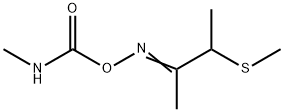Uses
Labelled Butocarboxim, a systematic selectively acting insecticide with anticholinesterasic activity. Butocarboxim is used to control sucking pests such as mites, aphids, white flies as well as bees i
n agriculture.
Uses
Butocarboxim is a systematic selectively acting insecticide with anticholinesterasic activity. Butocarboxim is used to control sucking pests such as mites, aphids, white flies as well as bees in agric
ulture.
Metabolic pathway
Butocarboxin is a structural isomer of aldicarb. Butoxycarboxim is the
sulfur oxidation (sulfone) product of butocarboxim. Limited information
is available to describe the degradation and metabolic fate of these two
compounds. As with aldicarb, oxidation of the sulfur molecule of butocarboxim
to butocarboxim sulfoxide and butoxycarboxim is the primary
photolytic and metabolic reaction in soils, plants and animals (Scheme 1).
Degradation
Butocarboxim (1) is stable to hydrolytic degradation (pH 5-7, up to 50 °C,
PM) and is stable under UV light irradiation. It degrades under strong
acidic and alkaline conditions.
Butoxycarboxim (2) is susceptible to alkaline hydrolysis (DT
50 values of
500, 18 and 16 days in pH 5, 7 and 9, respectively, PM). It is also stable
under UV light irradiation.



